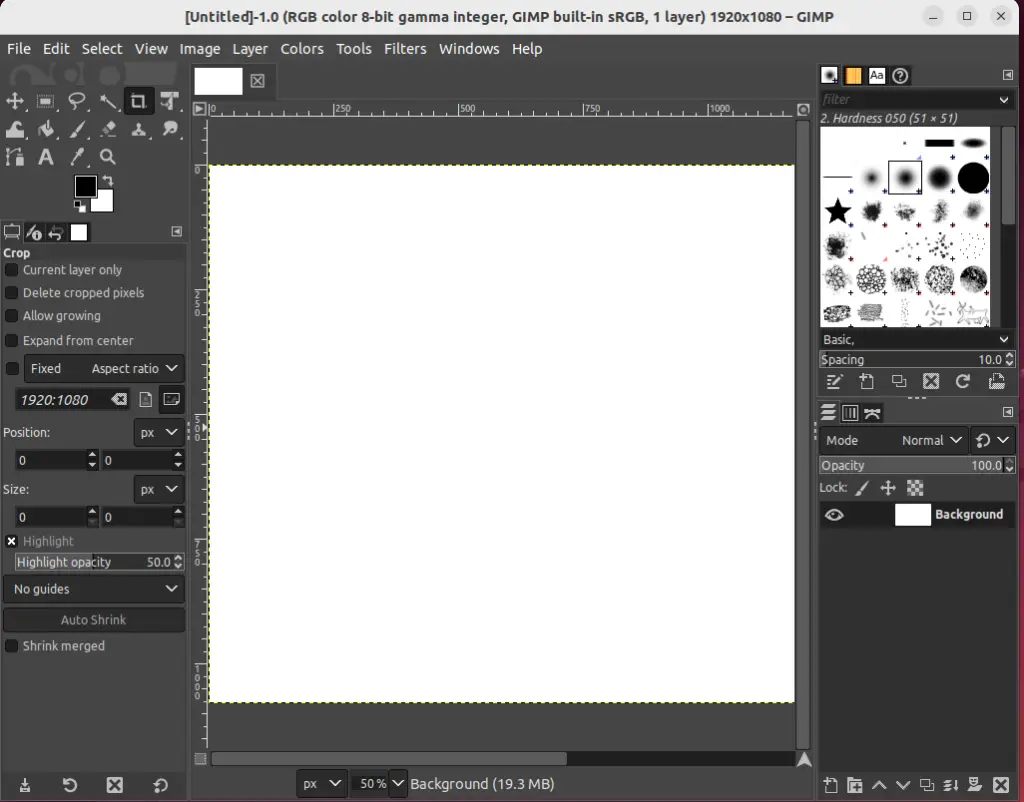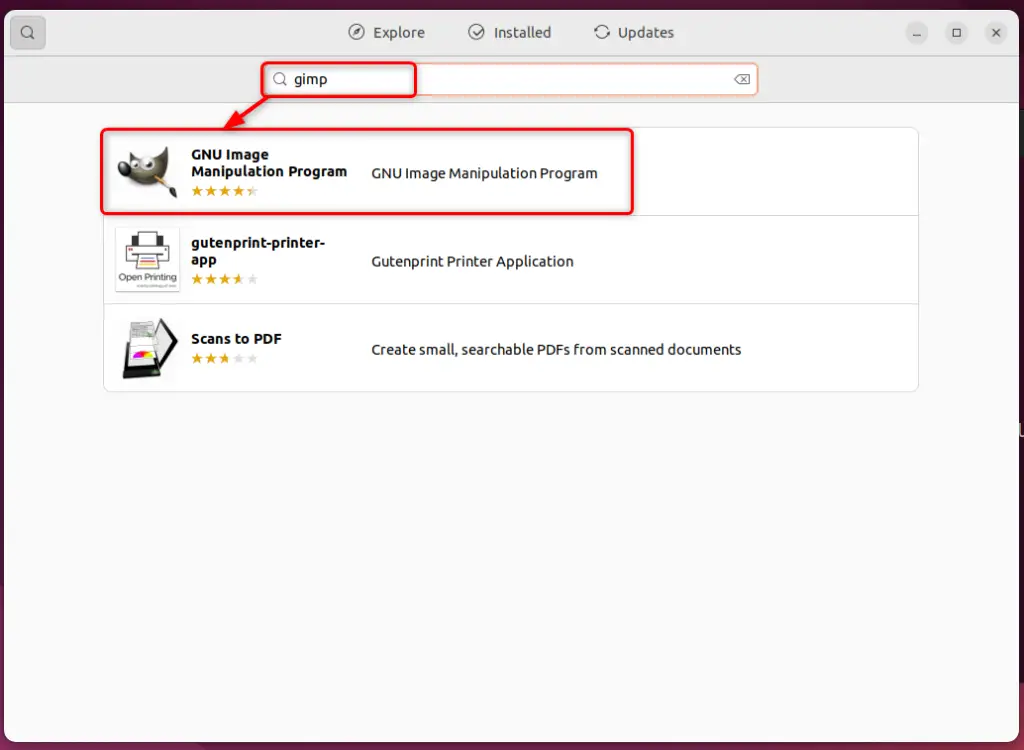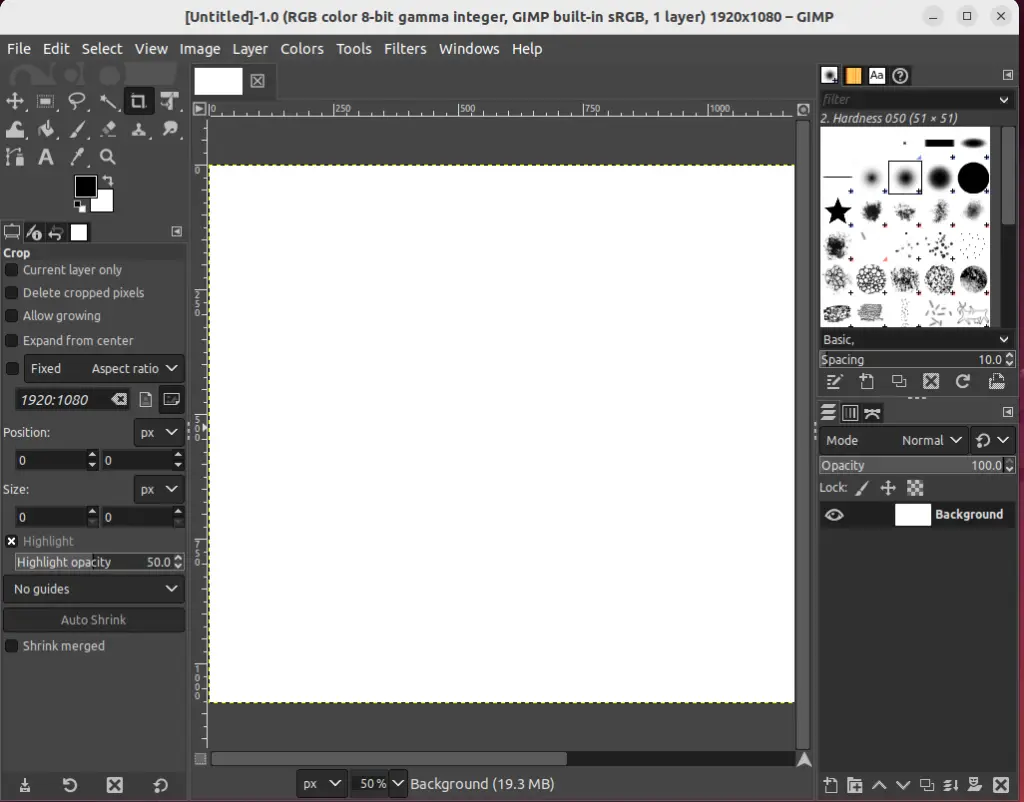The “GIMP” stands for “GNU Image Manipulation Program”. It is an open-source graphics editor used to manipulate images(retouching), image composition and authoring, and much more. The advantage of using “gimp” on Linux is that its source code can be easily customized and distributed with the new changes.
Considering its importance, this post enlists all possible methods to install “GIMP” on Linux with the following content list:
- Method 1: How to install GIMP on Linux Via Terminal?
- Method 2: How to install GIMP on Linux Via GUI?
Method 1: How to install GIMP on Linux Via Terminal?
This section comprises various package managers to install the “GIMP” application on Linux via the command line interface.
Method 1.1: Using Snap Package Manager
The “snap” is a container/bundle with various apps and their dependencies. The snap support is available on various most used Linux distros. Follow the steps to install GIMP via snap:
Step 1: Install Snapd Package
The “snapd” package is installed by default on Linux distributions. If it is not already available, then install it using the command:
$ sudo yum install snapd #For CentOS/RHEL
$ sudo dnf install snapd #For Fedora
$ sudo apt install snapd #For Ubuntu/Debian based

Here the “snapd” is already the newest version “2.57”.
Step 2: Install GIMP Application
Now install the “gimp” application by using the “snap” package manager with the super user support in this way:
$ sudo snap install gimp #For All Linux Distributions

The “gimp” is successfully installed using the “snap” package manager.
How to Launch the “GIMP” Tool on Linux?
To launch the “gimp” tool on Linux, simply type the “gimp” on the terminal and press the “Enter” key.
$ gimp

How to Remove GIMP Using Snap?
The user can easily remove or uninstall the “gimp” from the system with the help of the below-mentioned command:
$ sudo snap remove gimp

Method 1.2: Using Flatpak Package Manager
Flatpak is another package manager that facilitates the user to download packages from multiple repositories known as “remotes”. This method uses the well-known remote “Flathub” to install the “gimp” tool.
Step 1: Install Flatpak Package
The “Flatpak” is not installed by default. First, install the following commands:
$ sudo yum install flatpak #For CentOS/RHEL
$ sudo dnf install flatpak #For Fedora
$ sudo apt install flatpak #For Ubuntu/Debian-Based

The “Flatpak” package manager is successfully installed.
Step 2: Add Remote “Flathub” Repository
The “Flathub” repository is an official repository with thousands of applications. Add it to the various Linux distros using the below-mentioned command:
$ flatpak remote-add --if-not-exists flathub https://flathub.org/repo/flathub.flatpakrepo

Step 3: Install the “Gimp” Tool
In the last, install the “gimp” tool having its latest version “2.10.30”:
$ flatpak install https://flathub.org/repo/appstream/org.gimp.GIMP.flatpakref

The output verifies that “GIMP” installation is completed successfully.
How to Remove GIMP Using Flatpak?
Execute the following command to remove the “GIMP” application from the Linux system:
$ flatpak uninstall org.gimp.GIMP

The “GIMP” has been removed from the system.
Method 2: How to install GIMP on Linux Via GUI?
Apart from the command line, the “Software Center” of the GUI-based Linux distros can also be used. These steps are performed on Ubuntu, however, they are the same on the distributions that support the GUI.
Step 1: Open Software Center
Search for the respective Software Center in the search bar of the applications menu and open it:

Step 2: Install the GIMP Tool
Search for the GIMP in the search bar of the software center:

Click on the green “Install” button to start the installation process:

It requires the root user authentication password. Type the password and press the “Authenticate” button:

The installation process is started and will be completed in just a few seconds:

The “gimp” is successfully installed.
Step 3: Launch the GIMP
After installation, click on the “Show Applications” icon and type the “gimp” application in the “Search” bar. Click on the shown result, which is the “gimp” tool:

The interface of the “gimp” tool looks like this:

Conclusion
On Linux, the “GIMP” tool can be installed easily and quickly using the “snap”, and “Flatpak” package managers. Apart from these CLI methods, the system’s user can also perform this task using the “ Software Center”. This post has illustrated both CLI and GUI methods to install “gimp” on Linux.
